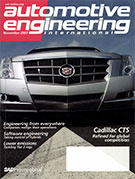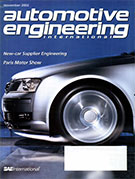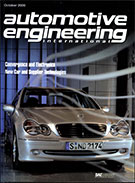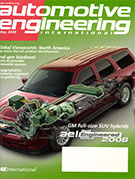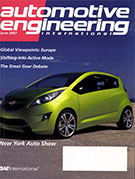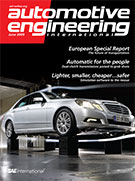Magazine

SAE Truck & Off-Highway Engineering: October 2019
2019-10-03
On the verge of the Digital Age Increasingly connected electrohydraulic systems and machine controls allow the high degree of controllability that's essential for automated operations. Miserly power systems Engineers push engine, transmission technologies to turn off fuel usage. All options on the table Powertrain developers who spoke at SAE COMVEC are leaving no stone unturned in their quest to trim emissions. Cab air quality: A critical component of operator comfort Focus on defining cab air quality, measuring it, and designing the needed performance into cabin designs and HVAC systems is intensifying. Expanding fast charging faster Tritium works to accelerate installation of DC fast-charging infrastructure to keep up with growing demand for commercial EVs.











